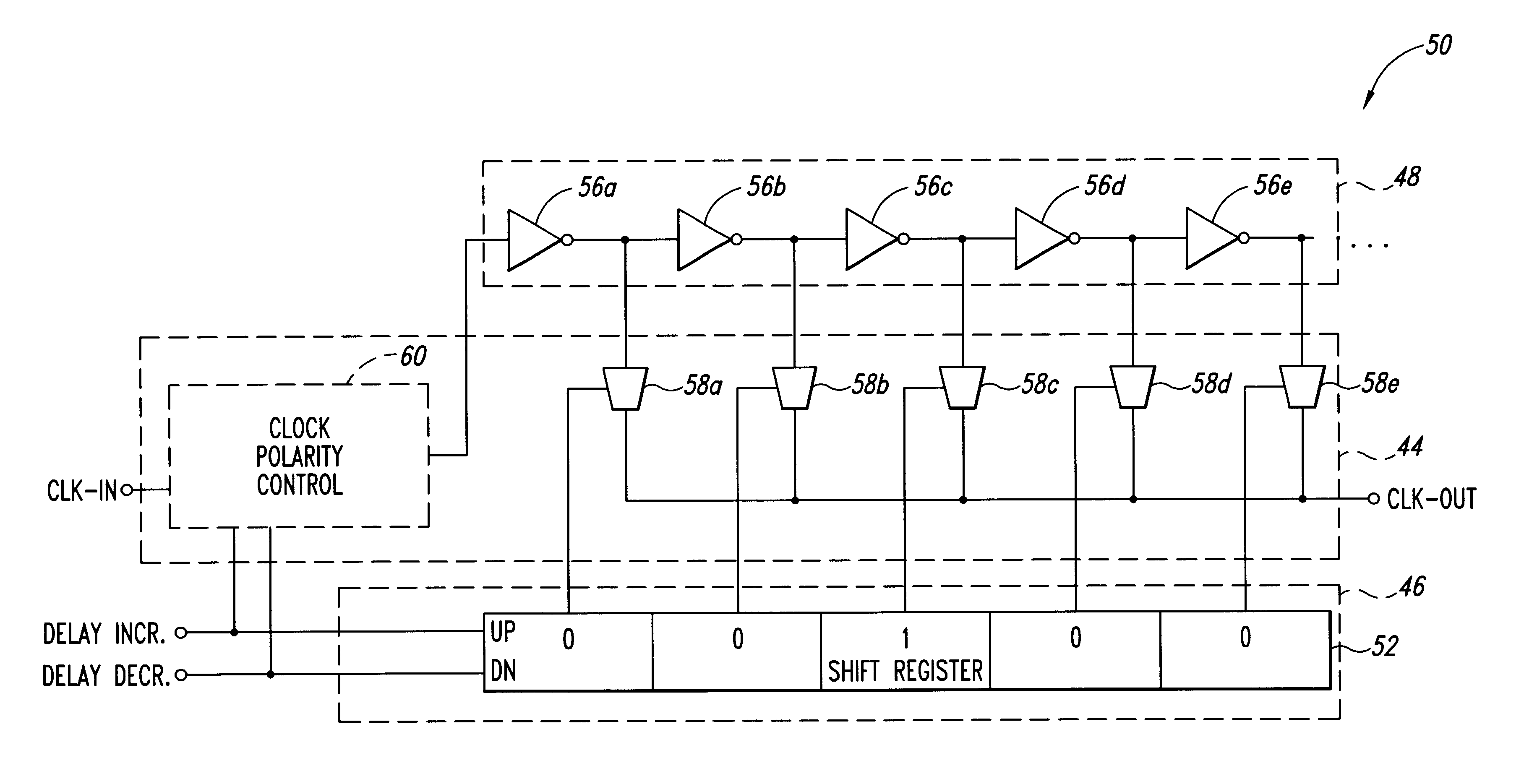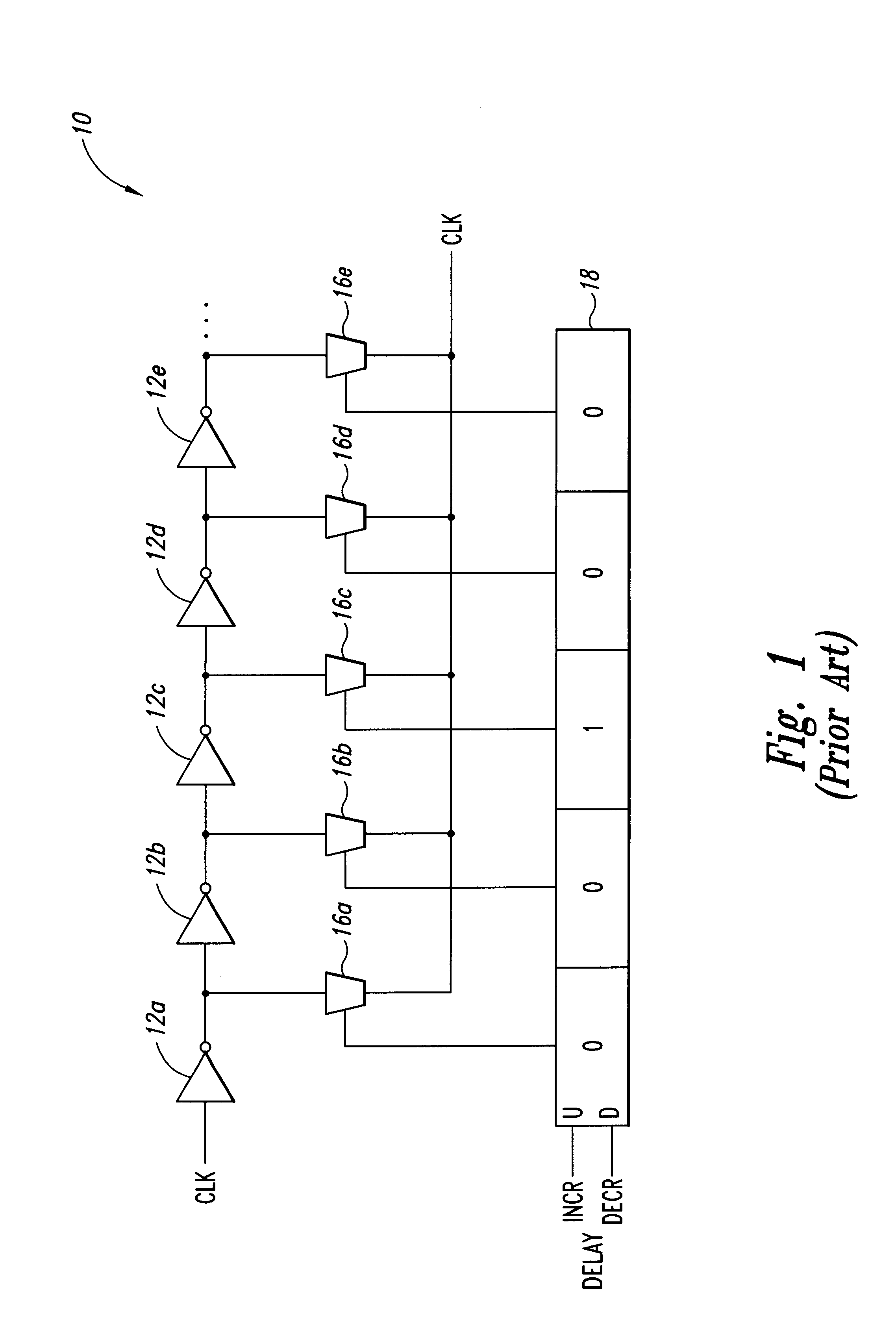Variable delay circuit and method, and delay locked loop, memory device and computer system using same
a delay circuit and delay lock technology, applied in the field of clock circuits, can solve the problems of significant disadvantage of inverting the clock signal, additional delay can be a significant problem, and the extra circuitry and consequent cost of these additional inverters can be significan
- Summary
- Abstract
- Description
- Claims
- Application Information
AI Technical Summary
Benefits of technology
Problems solved by technology
Method used
Image
Examples
Embodiment Construction
FIG. 3 is a block diagram of one embodiment of a variable delay circuit 40 according to the present invention. The delay circuit 40 included a clock transfer control circuit 44 to which an incoming clock signal CLK-IN is applied and from which a delayed clock signal CLK-OUT is generated. The transfer control circuit 44 also receives DELAY INCR and DELAY DECR pulses that are also applied to a delay select circuit 46. The clock transfer circuit 44 is coupled to the delay select circuit 46 and to a plurality of inverting logic circuits 48a,b,c,d.
In operation, the delay select circuit 46 outputs a signal on one of its interconnections to the clock transfer circuit 44 that selects the magnitude of the delay of the CLK-OUT signal. The interconnection on which the select signal is generated is shifted in one direction to increase the delay responsive to each DELAY INCR pulse, and is shifted in the other direction to decrease the delay responsive to each DELAY DECR pulse. The select signal...
PUM
 Login to View More
Login to View More Abstract
Description
Claims
Application Information
 Login to View More
Login to View More - R&D
- Intellectual Property
- Life Sciences
- Materials
- Tech Scout
- Unparalleled Data Quality
- Higher Quality Content
- 60% Fewer Hallucinations
Browse by: Latest US Patents, China's latest patents, Technical Efficacy Thesaurus, Application Domain, Technology Topic, Popular Technical Reports.
© 2025 PatSnap. All rights reserved.Legal|Privacy policy|Modern Slavery Act Transparency Statement|Sitemap|About US| Contact US: help@patsnap.com



